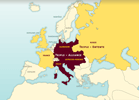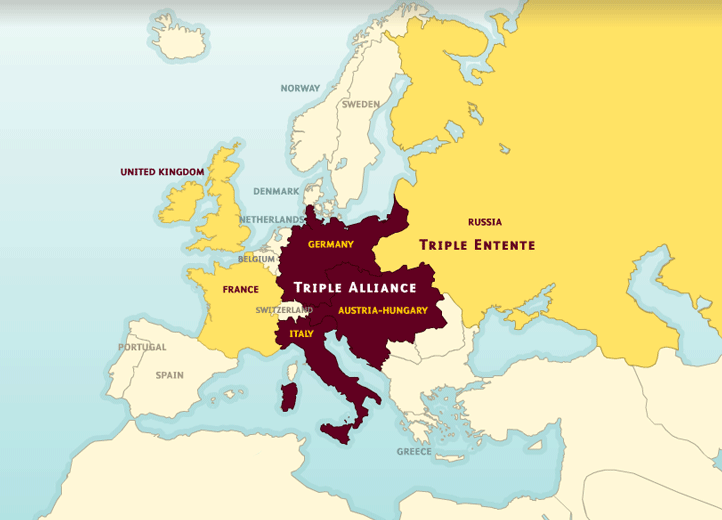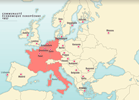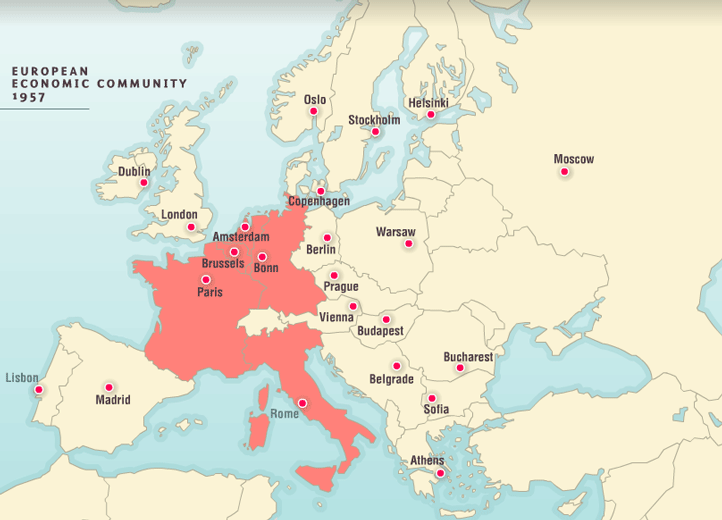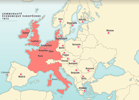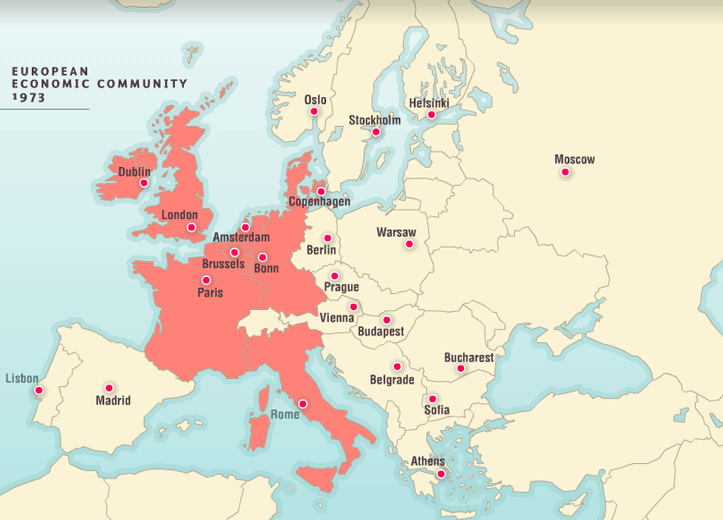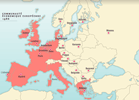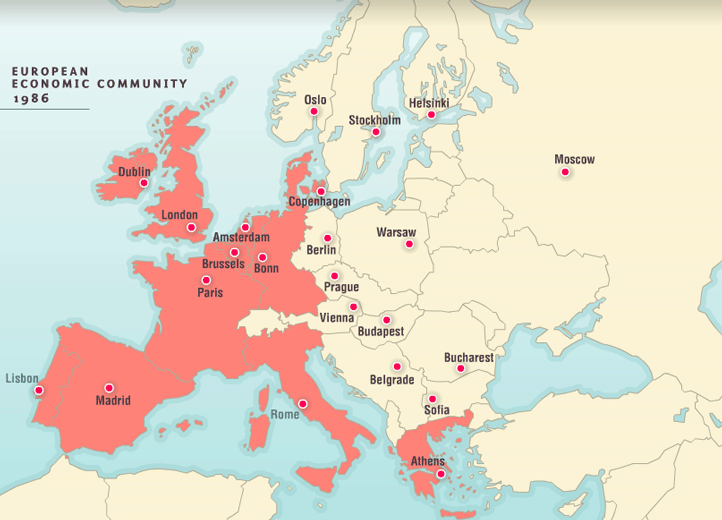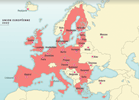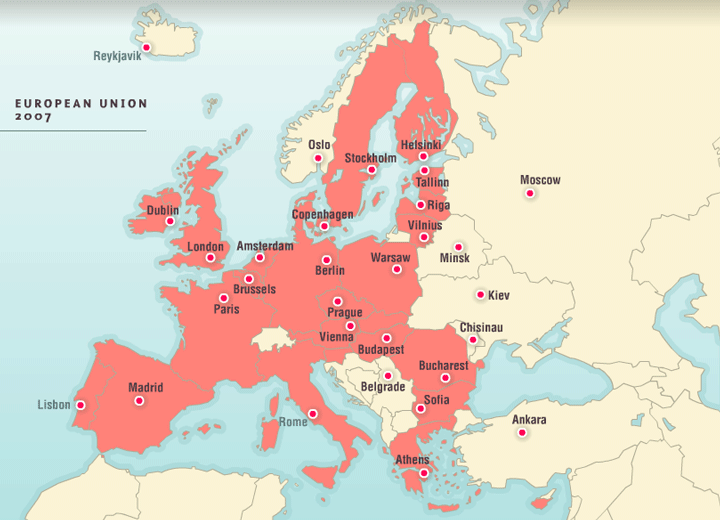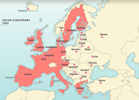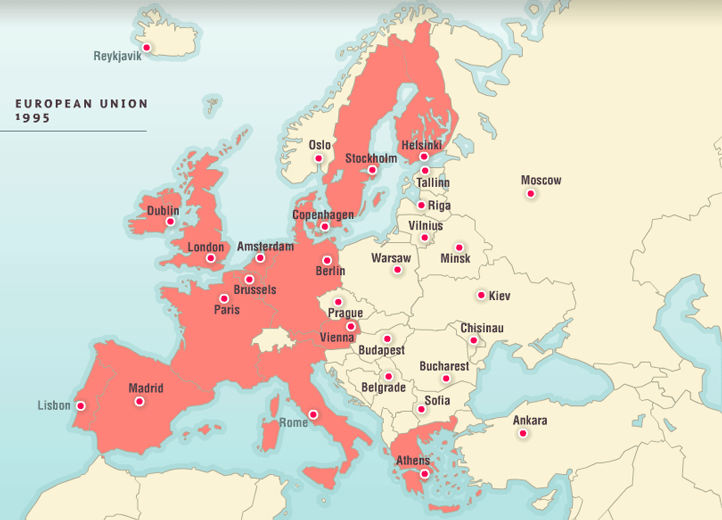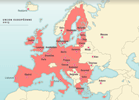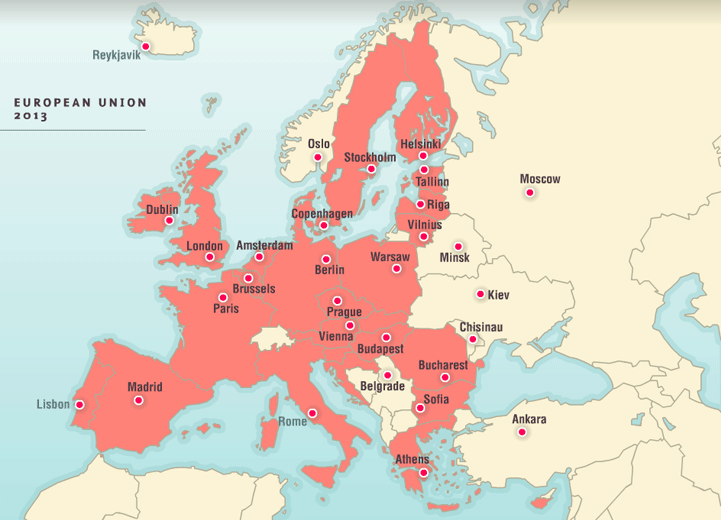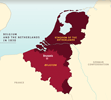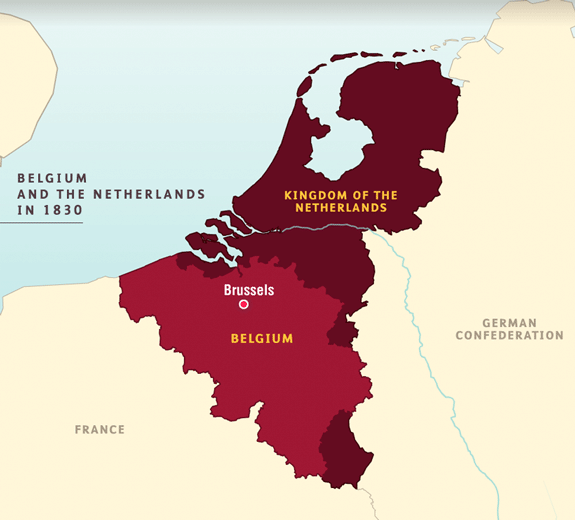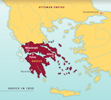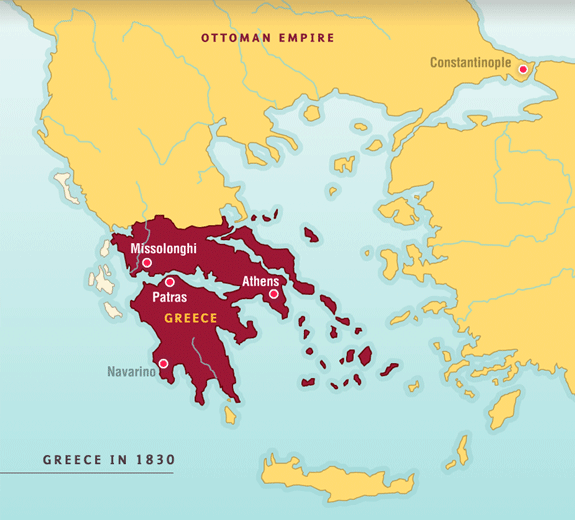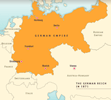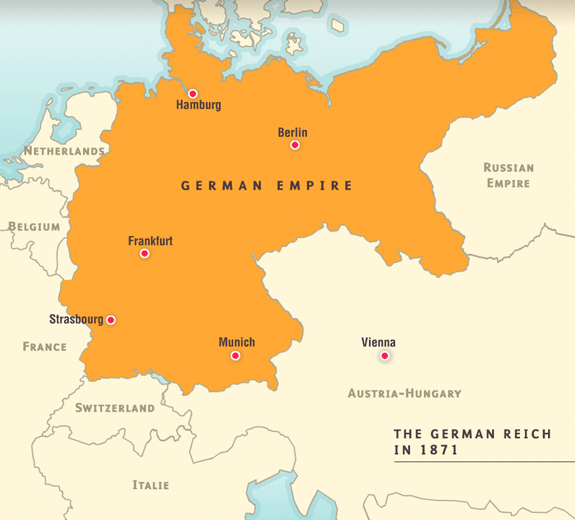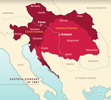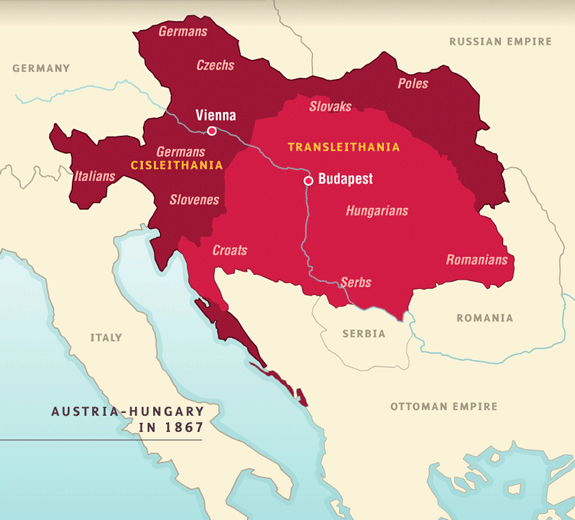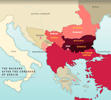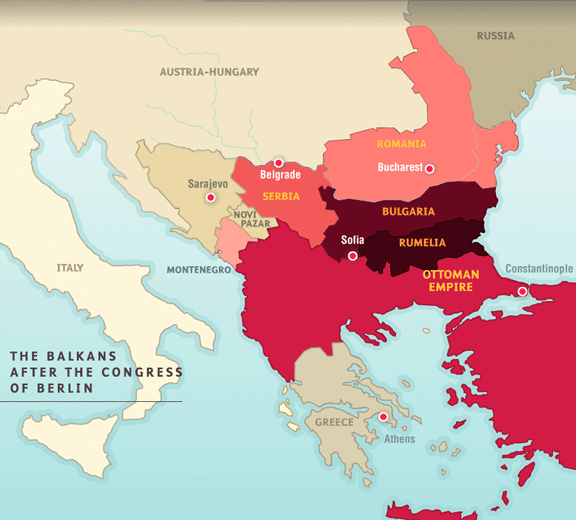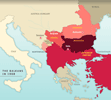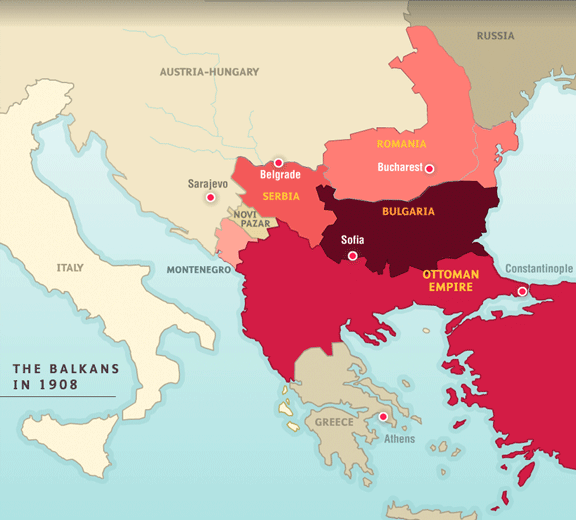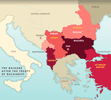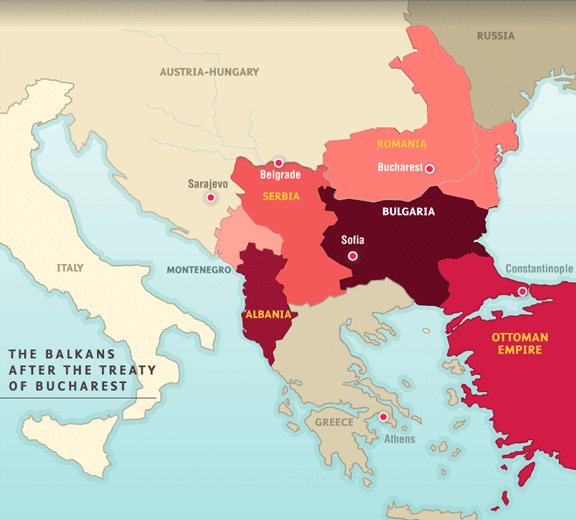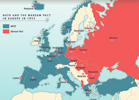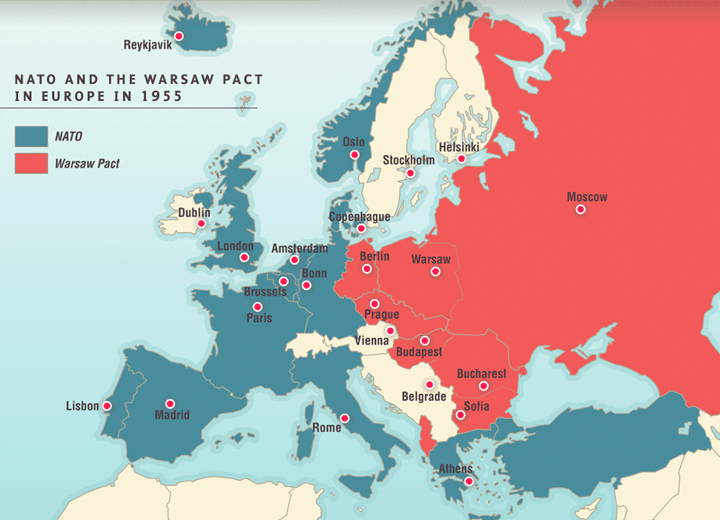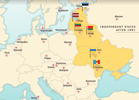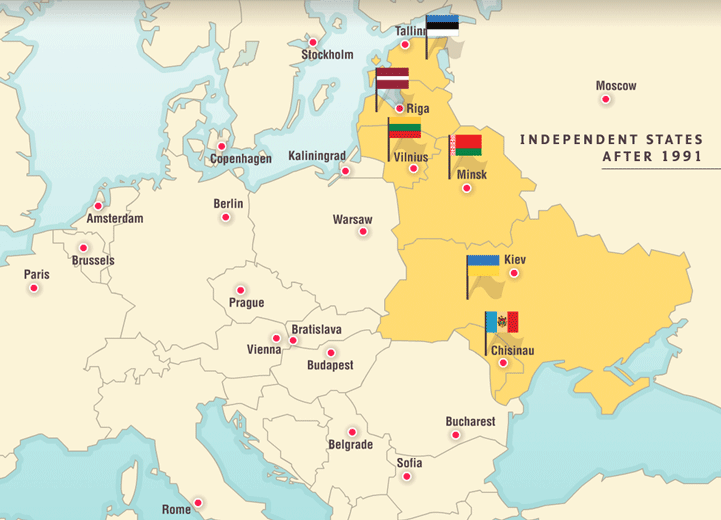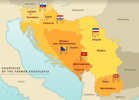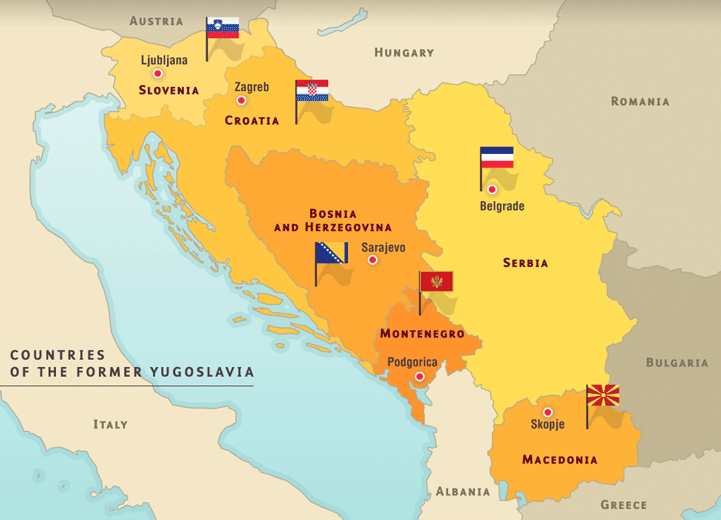the Congress of Vienna
against the Ottoman Empire
monarchy
of Germany
becomes Austria-Hungary
Alliance
Alliance
cordiale
Entente
of Versailles
the First World War
of the Soviet Union
the Second World War
Treaty
of Rome
enlargement
enlargement
enlargement
enlargement
enlargement
enlargement
the Nobel Peace Prize
Czechoslovakia
The six founding states
9 member states
12 member states
15 member states
27 member states

Congress of Vienna
This international congress met in Vienna between November 1814 and June 1815 to redesign the boundaries between European states following the Napoleonic Wars.
Numerous politicians played significant roles, including Metternich for Austria, Talleyrand for France, Wellington for the United Kingdom.

Irish Independence
On December 6, 1921, after the War for Independence, an Irish delegation signed the Anglo-Irish Treaty with the British government. The southern part of the island, Eire, became a free state, attached to the British crown as a dominion. In the north, six counties formed Ulster, which remained part of Britain.

The Great Depression
The “1929 crisis” began in the United States with the stock market crash on Thursday, October 24th – “black Thursday.” This crisis plunged the American economy, then the world economy into a severe and complex economic depression: bank defaults and market devaluation, unemployment and despair.

Spanish Civil War
Between July 1936 and April 1939, this deadly conflict opposed Spanish republicans and nationalist rebels lead by General Francisco Franco (1892-1975).
It ended with the victory of the nationalists, who had received aid from fascist Germany and Italy.
For additional information please refer to the animated map "Spain: Republicanism and Civil War, 1931-1939" in our series Europe and nations 1918-1942.

Treaties of Rome
Two treaties were signed on March 25, 1957 by the Federal Republic of Germany, Belgium, France, Italy, Luxembourg and the Netherlands.
The first gave birth to the European Economic Community (EEC) and established the progressive development of a customs union.
The second approved the creation of a European Atomic Energy Community (EAEC or Euratom), with the goal of ensuring European energy independence.
enlargement
28 member states
of the Netherlands
in 1830

Belgian Independence
Riots in Brussels during the summer of 1830 led to the break-up of the Kingdom of the Netherlands, which was established by the Congress of Vienna.
When the European powers met in London, they agreed on the separation of the two countries and issued a declaration of neutrality for Belgium.
For additional information please refer to the animated map "Independence of Belgium" in our series Europe and nations 1815-1914.

Greek Independence
Greece became independent in February 1830 after a long struggle with the Ottoman Empire.
The new state covered the regions of the Peloponnese, the northern areas of the Gulf of Corinth, Athens, Euboea and the Cyclades, but several large regions in which there was a majority of Greek residents remained under Ottoman control.
For additional information please refer to the animated map "Independence of Greece" in our series Europe and nations 1815-1914.
in Europe in 1955

The Revolutions of 1848
Early in 1848, inspired by the Romantic Movement, a number of revolutions broke out throughout Europe and threatened the European order established by the Congress of Vienna.
The uprisings were short-lived and, in 1849, these democratic movements were beaten particularly in Austria, Germany and Italy.
For additional information please refer to the animated map "Revolutions of 1848" in our series Europe and nations 1815-1914.

Unification of Italy
Helped by France, the Kingdom of Piedmont-Sardinia brought an end to Austrian domination in Italy and succeeded in unifying the peninsula under King Victor Emmanuel.
Garibaldi’s successful “Expedition of the Thousand” was a key event in the unification of the country.
For additional information please refer to the animated map "Unification of Italy" in our series Europe and nations 1815-1914.

Unification of Germany
In 1815, the Congress of Vienna created the German Confederation but it had no real power.
Bismarck, Prussia’s Chancellor, succeeded in unifying Germany by launching three wars against Denmark, Austria and France.
The King of Prussia, Wilhelm I was proclaimed German Emperor in the Hall of Mirrors at the Château of Versailles on 18 January 1871.
For additional information please refer to the animated map "Unification of Germany" in our series Europe and nations 1815-1914.

Austria-Hungary
The Austrian Empire, much weakened by its exclusion from the unified German state, became a bi-national state, Austria-Hungary under one sovereign who was Emperor in Vienna and King in Budapest.
This political evolution did not resolve the difficult question of the country’s national minorities.
For additional information please refer to the animated map "Austria-Hungary 1867" in our series Europe and nations 1815-1914.

Independence of the Balkan Peoples
After 1875, a series of crises created upheavals in the Balkans which led to the Ottoman Empire losing almost all its territories on the European continent.
The allocation of territory among the Balkan peoples was made more difficult by rivalries amongst the European Powers and the presence of multi-national populations throughout the region, and in particular in Macedonia.
For additional information please refer to the animated map "Independence of the Balkan Peoples" in our series Europe and nations 1815-1914.

Norway’s independence
In 1905, the Norwegian Parliament declared the abolition of the Union with Sweden. This decision was confirmed by a referendum held in Norway.
For additional information please refer to the animated map "Independence of Norway" in our series Europe and nations 1815-1914.

A wave of authoritarian regimes
During the 1920s, extreme-right parties took power or wielded strong political influence in several European countries.
This wave of authoritarianism arose from dissatisfaction with the peace treaties, the socio-economic upheavals provoked by World War I, and the fragility of democratic institutions still in the early stages of development.
For additional information please refer to the animated map "Authoritarian Regimes in the 1920s" in our series Europe and nations 1918-1942.

Yugoslavia: The Union breaks apart
In 1946, Yugoslavia became a federal state, but later there was tension between the Serbs, who preferred a centralized state, and the other nationalities, in particular the Croats and the Slovenes.
In June 1991 Croatia and Slovenia decided to proclaim their independence. Yugoslavia began to implode and the country was plunged into war.
For additional information please refer to the animated map "Yugoslavia: From Unity to Disunity" in our series Europe and Nations from 1945 to the present.
